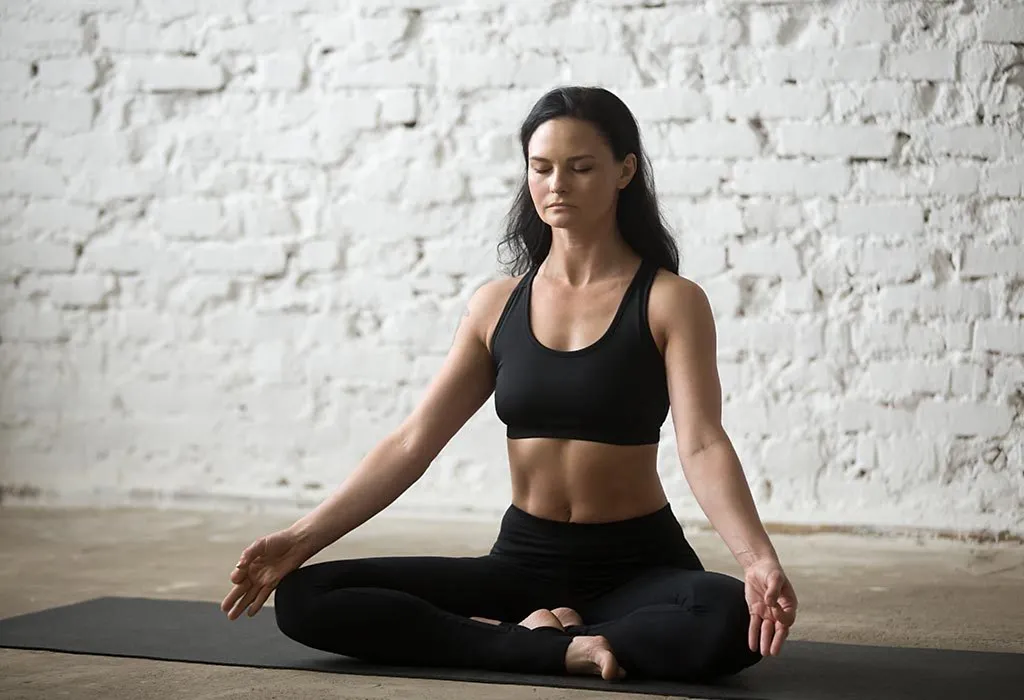The benefits of kapalbhati pranayama are undoubtedly breathtaking. After a hectic day at work, coupled with pollution and humidity, you become feeble and inert. This age-old breathing technique can help you get your energies back, attain balance, and detoxify yourself. So, what is this technique all about? And how do you do it? In this article, we address these queries and delve into the benefits and types of kapalbhati pranayama. Take a peek!
What Is Kapalbhati Pranayama?
Long long ago, a set of breathing techniques were devised to assist people with their overall well-being. It is termed the meditative respiration, and it is an essential aspect of yoga. Kapalbhati Pranayama is one among them, and it has been keeping people healthy and wholesome since antiquity.
A study analyzed the data obtained from the 2017 National Health Interview Survey, which involved 61,267 Americans. In 2017, the percentage of individuals who had engaged in yoga within the past 12 months was reported to be 13.3%, while 7.0% had incorporated yogic respiration and meditation into their regimen.
The study also found that individuals between the ages of 50 and 64 were more likely to practice YoBaM (Yoga, Breathing, and Meditation) compared to those aged 29 or younger. Additionally, females, Hispanics, and individuals experiencing mild to severe psychological distress demonstrated a higher likelihood of incorporating YoBaM as part of their yoga practice.
How To Do Kapalbhati

1. Sit The Right Way
Sit contentedly in Sukhasana or the Easy Pose. Place your forearms on your knees. Ensure they are facing upwards. Direct your focus and awareness to the abdominal region. It is beneficial if one sits on a folded blanket on a pair of yoga blocks so that the spine remains elevated and vigilant.
2. Inhale Well
Inhale thoroughly with both your nostrils, flooding both your lungs with oxygen. The respiration should be a gradual and constant inhalation of air, concentrating on the ventilation and inhaling in a tranquil manner.
3. Exhale Rapidly
Pull your midsection in towards your spine. Get your navel closer to the spine as much as you can. Place your right hand on the navel to feel your abdominal muscles contracting. As you unwind from the contraction, you exhale air in a brief surge followed by an automatic inhalation. During exhalation, there will be a gurgling sound. At that juncture, feel that all the evil in your body is pouring out. As you release your abdomen, you can feel the oxygen entering your airways.
4. Relax Deeply
Inhale and exhale in this manner for about 20 times. That will be one round of Kapalbhati. Rest after you complete one round by sitting silently in Sukhasana with your eyes closed and observe the sensations erupting in your body.
Types Of Kapalbhati Pranayama
There are three kinds of Kapalbhati Pranayama. They are:
-
Vatakrama Kapalbhati – This is the kind we discussed above, where the exhalation is active, and the inhalation is passive.
-
Vyutkrama Kapalbhati – This type requires you to take in water through your nostrils, let it travel down your mouth, and ultimately spew it out through your lips.
-
Sheetkrama Kapalbhati – This is the opposite of Vyutkrama Kapalbhati, and it requires you to take in water from the pharynx and expel it through your nostrils.
Benefits Of Kapalbhati Pranayama

Kapalbhati benefits your body, mind, and psyche in several ways. Here are some of its advantages:
-
Kapalbhati generates heat in your body and thus helps in the process of detoxification by dissolving toxins and other waste matter.
-
It enhances the functioning of the kidneys and liver.
-
It removes tension from the eyes and erases dark circles.
-
It enhances blood circulation and digestion.
-
The method increases your immunity, metabolic rate, thus facilitating rapid weight loss.
-
It stimulates your abdominal organs and is thus beneficial for diabetic patients.
-
It rejuvenates your intellect and energizes your nerves.
-
The process calms you and uplifts your mind.
-
It gives you a sense of balance and sensibility, enhances mindfulness, and makes you feel purified and clutter-free.
-
It eliminates acidity and gas-related problems if done correctly. It is not recommended for persons with gastric issues.
-
Kapalbhati strengthens your airways and increases their capacity.
Read Also: 18 Ways to Get Motivated for a Run
Side Effects
-
Kapalbhati may lead to hypertension and hernia.
-
It can cause disorientation and migraines.
-
You might experience a nauseous sensation.
-
Your mouth can become parched.
-
You might experience excessive perspiration and salivation.
Precautions
-
Heart patients should go leisurely with their exhalation.
-
Practice Kapalbhati in the morning on an empty stomach.
-
Those with elevated blood pressure should reduce their rate of Kapalbhati.
-
Learn Kapalbhati from a certified yoga teacher after having a health check-up done.
-
It is recommended to avoid this technique if you are expectant or menstruating. Instead, you can employ meditation in such cases.
-
Avoid Kapalbhati if you have a herniated disc or a stent.
-
If you have ulcers, be cautious while practicing Kapalbhati.
-
Kapalbhati is a sophisticated breathing technique. Attempt it only after becoming adept in the basic level pranayama.
-
Keep in mind your limitations during the practice and work through the process accordingly.
-
Be cautious and aware during the breathing exercise if you have respiratory issues like asthma.